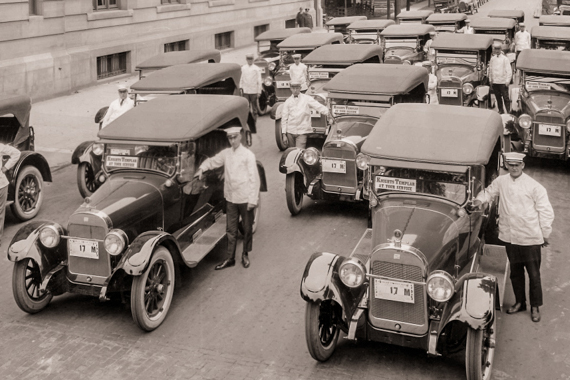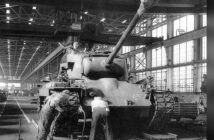
Some words invoke pungent aromas: strong flavors that imbibe our romanticism of bygone eras. Freemasonry is one of them. Reminiscent of secrets and treasure (and secret treasures), ancient architecture and noble causes, the enigmatic Freemasons have a lodge in Downtown Flint, with their society hidden in plain view of S. Saginaw Street.
Freemasonry is nearly as old as the hills, says an anonymous Flint Mason. The operative craft of masonry was work done with stone, brick and mortar: masonic exactitude and precision necessary for colossal architecture was developed during the construction of the pyramids circa 2500 B.C. What is known as the speculative craft of masonry—which is practiced by Masons in this age—refers to the wisdom and spiritual knowledge that the operative craft precipitated. The two symbols of freemasonry, the square and compass, demonstrate the interplay between the operative and speculative crafts. The square was used in masonry to ensure that stones lined up with one another perfectly, and so it has come to reflect how modern-day masons must be honest with each other and with God in order to remain “on the level.” The twin compasses are often shown with a ‘G’ in the middle, revealing how every action is within view of the ever-watching God.
Often considered the first fraternity, the operative craft of masonry is claimed to have given rise to many modern mechanisms of the workforce, such as labor unions, insurance, and currency. Masons say that the speculative craft was initiated during the construction of King Solomon’s Temple. The Old Testament, in speaking of the construction, states, “Solomon had … eighty thousand stonecutters in the hills … At the king’s command they removed from the quarry large blocks of high-grade stone to provide a foundation of dressed stone for the temple.” 1 Kings 6:7 continues by stating, “In building the temple, only blocks dressed at the quarry were used, and no hammer, chisel or any other iron tool was heard at the temple site while it was being built.” This explanation is a tribute to the expertise of the masons working on the project, and knowledge so deep as to be able to prepare the stones perfectly off-site was believed to be spiritually endowed. From this time on, masons began to practice the spiritual craft as a means for inculcating the discipline required to be a master stone-worker into all aspects of their lives. This goal, says our aloof informant, is still sought today, and masonic rituals used in the present time are considered a conduit for wisdom and understanding.
Masonry is neither a religion nor a political organization; rather, it is a worldview that underlies every belief and action of its members, their purpose and their beliefs. Its influence worldwide is unmistakable: nearly every town of modest size has a lodge, even if there is not a temple as fancy as Flint’s. One of the most notable groups of Masons is called the Shriners, whose sole mission is to support the work of the 22 Shriner’s Hospitals for Children nationwide. These hospitals treat children for a variety of illnesses and disorders, regardless of their families’ ability to pay.
The idea for the Flint Masonic temple was proposed in 1905, when masonic bodies were still meeting in the Union Trust and Savings Bank. Originally, the location for the temple was settled for the corner of Beach and Third Streets; however, legal complications induced the Masons to purchase property on the corner of Saginaw and Fourth Streets. After a visit to Toledo, Ohio to study the Masonic Temple there, plans were drawn up and approved in 1909. The engraved silver trowel used for laying the cornerstone of the Flint building is still on display in its Blue Room. Construction being finished, the Temple was dedicated in 1911 with great celebration, and since then has housed numerous lodges as they go about their charitable work. In 1981, Flint’s Masonic Temple was designated as a Historic Site by the State of Michigan, and it is now 102 years old.
Currently, an estimated 700 men in Flint are Masons, with thousands of other members throughout the greater Flint area. This band of brothers, although right in our midst, seems to operate on a higher plain, seeing the world through a different lens. If you never have, visit the Masonic Temple Downtown, and you may be privileged to discover a secret about these mysterious men who continue to shape our world for good.
When is a man a Mason?
By Rev. Joseph Fort Newton
When he can look out over the rivers, the hills, and the far horizon with a profound sense of his own littleness in the vast scheme of things, and yet have faith, hope, and courage-which is the root of every virtue.When he knows that down in his heart every man is as noble, as vile, as divine, as diabolic, and as lonely as himself, and seeks to know, to forgive, and to love his fellowman.
When he knows how to sympathize with men in their sorrows, yea, even in their sins—knowing that each man fights a hard fight against many odds.
When he has learned how to make friends and to keep them, and above all how to keep friends with himself.
When he loves flowers, can hunt birds without a gun, and feels the thrill of an old forgotten joy when he hears the laugh of a little child.
When he can be happy and high-minded amid the meaner drudgeries of life.
When star-crowned trees and the glint of sunlight on flowing waters subdue him like the thought of one much loved and long dead.
When no voice of distress reaches his ears in vain, and no hand seeks his aid without response.
When he finds good in every faith that helps any man to lay hold of divine things and sees majestic meanings in life, whatever the name of that faith may be.
When he can look into a wayside puddle and see something beyond mud, and into the face of the most forlorn fellow mortal and see something beyond sin.
When he knows how to pray, how to love, how to hope.
When he has kept faith with himself, with his fellowman, and with his God; in his hands a sword for evil, in his heart a bit of a song—glad to live, but not afraid to die!
Such a man has found the only real secret of Masonry, and the one which it is trying to give to all the world.













